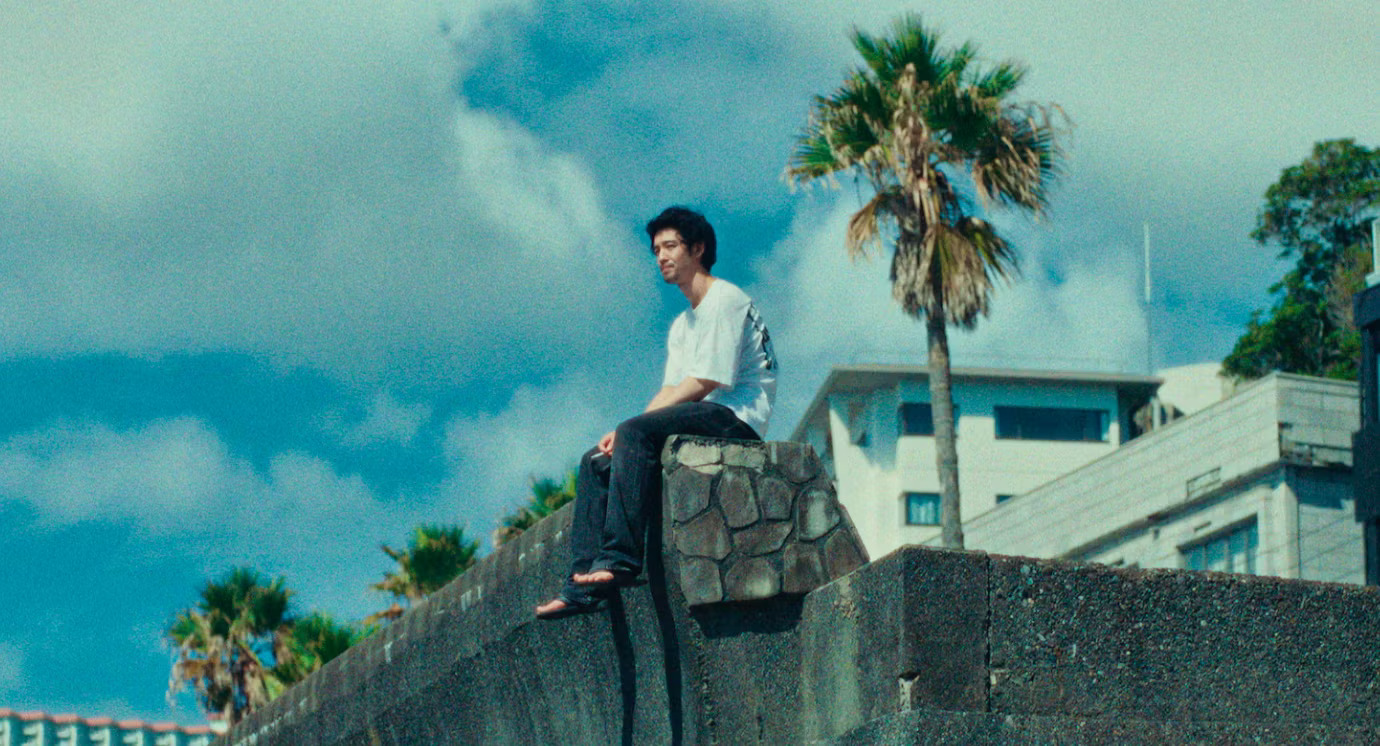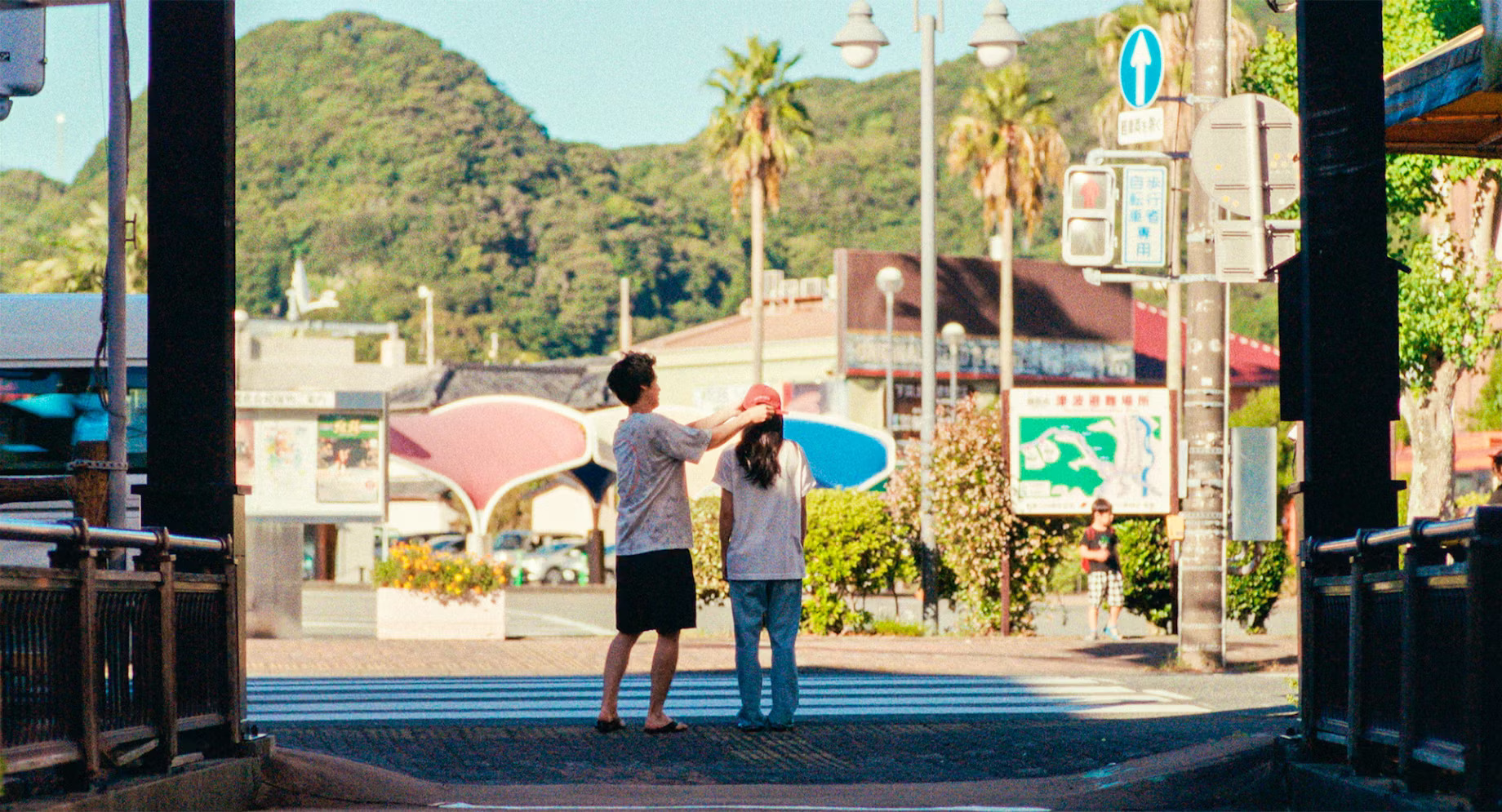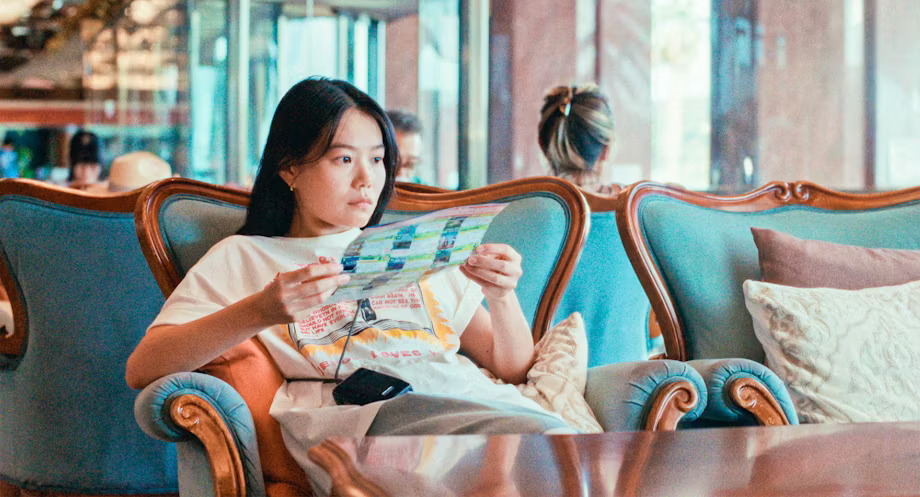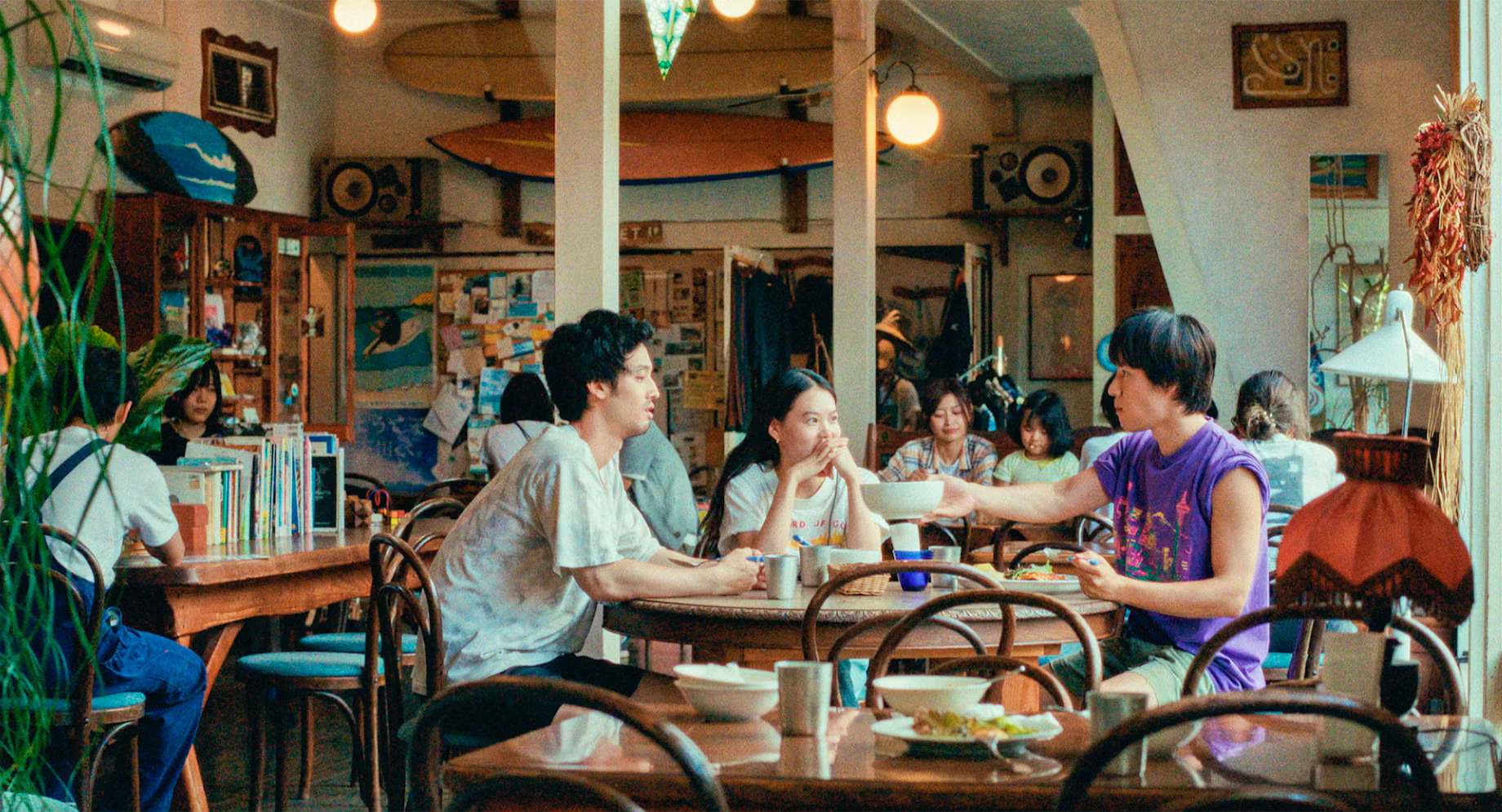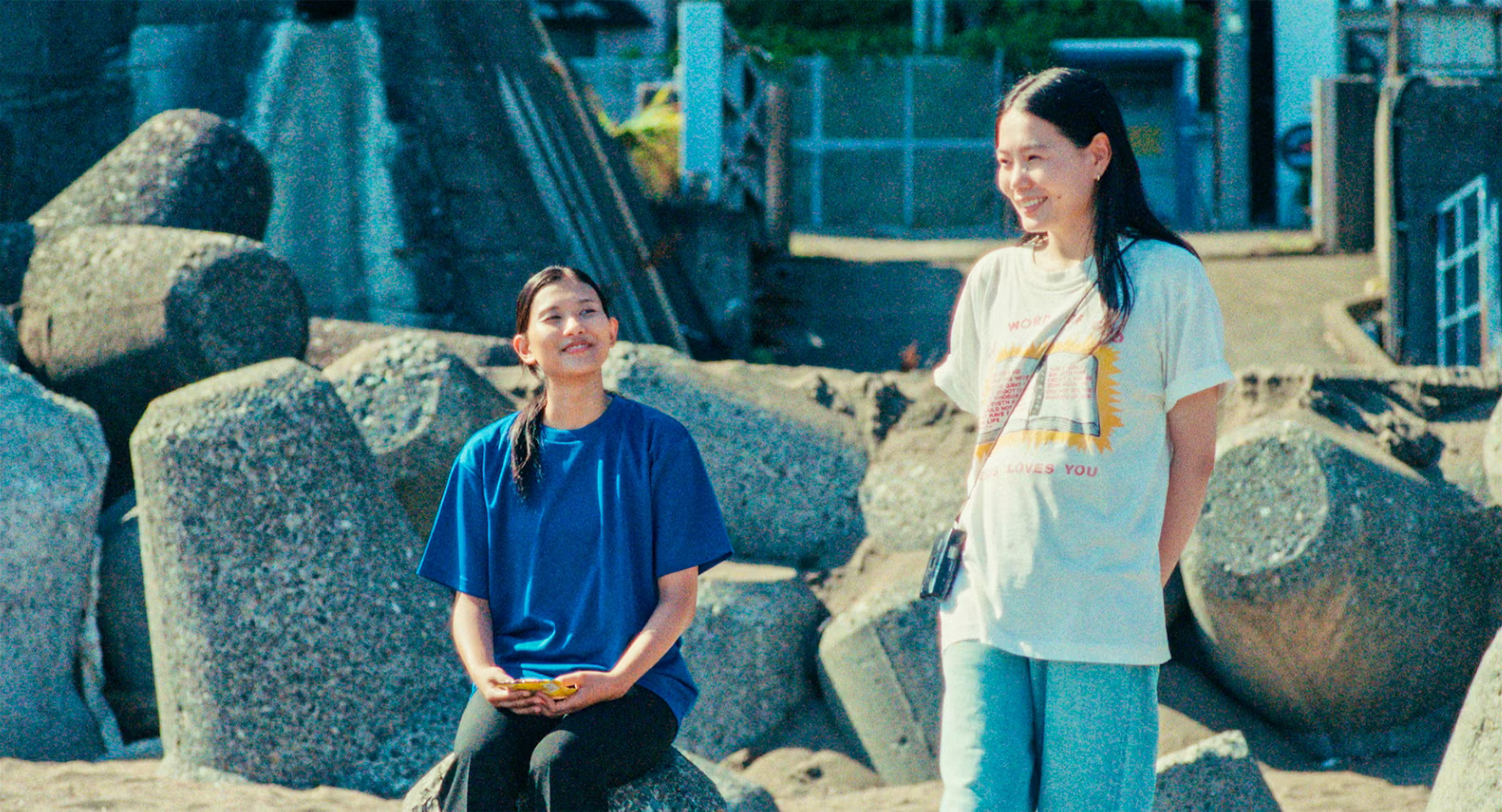Vancouver 2024 Interview: SUPER HAPPY FOREVER Director Kohei Igarashi Talks Romantic Memory and Finding the Happy in the Sad
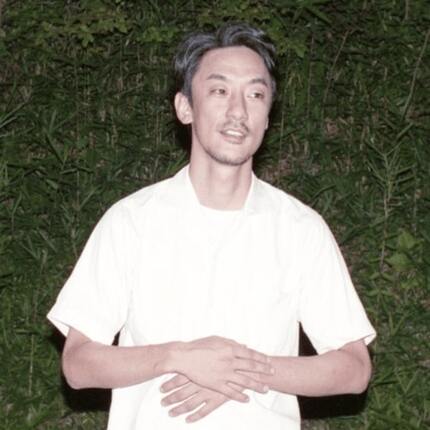
People and places can leave an impression on us. In absence of one thing, we might find ourselves returning to the other for traces.
Sano (Hiroki Sano) sits in his minimally adorned hotel room, staring blankly towards the light from the window. He's come with his friend Miyata to a seaside resort in Izu, where they first met Sano’s late wife, Nagi (Nairu Yamamoto), five years ago. Some things have changed, some things refuse to. What follows is a structurally ingenious, profoundly romantic film, a crisp sea breeze ode to the moments that we share and the sentimental significance that they carry in our lives.
Super Happy Forever is a special film, to my mind the most exciting feature out of Japan so far this year. I feel privileged to sit with director Kohei Igarashi for an hour to discuss it.
Over Zoom, we speak softly and slowly as we consider our reflections on the film. Igarashi's plain hotel room in San Sebastián can be seen in the background, white light peeking in through the slit curtains. We return to our opening scene with greater clarity.
How would you characterize SUPER HAPPY FOREVER, and what kind of film did you set out to make?
I wanted to make something simple. Reminiscent of classic Japanese and European cinema but updated. In Japan, romance films have become less popular recently, so we wanted to make something different.
Building on that, this film is an international co-production with a French company. It's striking to me, because your film occasionally reminds me of films by Hong Sang-soo, who's done the same, and also Kiyoshi Kurosawa's TO THE ENDS OF THE EARTH, another international co-production. Do you feel that the international nature of the production has inflected and influenced the film, and in what way?
Everything was shot in Japan with a Japanese crew, but we did the post-production in France. Sound and visual editing especially, when done with Japanese crews, can get quite Japanese-culturalized, perhaps more closed-minded and domestic.
In France, the cultural background is different. They think about sound and image in tandem. Because we did all the post-production in France, I feel there’s a width and lightness to the aesthetic that’s very non-domestic. I think it's because of that that the film has a sense of openness. Two international films inspired me: Tony Scott’s Déjà Vu and Robert Bresson’s A Gentle Woman.
I want to talk about your lead actor, Hiroki Sano. There's such physicality to him in the first half of the film in a very measured, heavy way. He really embodies the character's thoughts and feelings. How did you go about developing this performance with him?
Primarily through discussion. What Sano-san and I agreed was that, at the beginning of the film, he should move quite slowly, which is where this sense of heaviness comes from.
There's something very visually striking and immediately identifiable about a man in a slightly oversized t-shirt walking around looking lost. Was the costuming of the character instinctive?
The way he looks on the camera, the way his back is shown to the camera, and the oversized nature of the t-shirt are because I wanted to show that he still has his youthful, young mind from before, when he didn't have money.
There's a profound stillness to the film and its ambience. You've created a unique space for reflection and a symmetry to a situation that isn't fully revealed to us at the start of the film. How do you set about defining that mood and crafting that quality?
This kind of atmosphere is common to my films. It's not something intentional, it’s something I do unconsciously.
I think it’s because I'm not really interested in the narrative itself, more the temporality of the film. If you focus on the narrative itself, you have to incorporate a lot of dialogue and speed up to push the narrative forwards. But I'm more interested in the actions themselves and the temporality, a subtle shifting which brings a slow pace and stillness in the film.
Would you describe your style as realist? In style, the film is lightly affected, with a wonderful tendency towards the poetic, the symmetrical, and the romantic. But your characters’ actions and mannerisms feel recognizable and real.
The episodes in the film stem from real life, but in constructing a film I have to somehow transform those episodes into fiction. When I set about combining reality and fiction, I think about creating something that could only happen in a movie. The crossroad from reality into fiction, that’s what makes it a film.
You mention drawing on real life. Could you tell me about the real-life backdrop and inspiration for this film?
There are a lot of moments in my life that inspired me. One is from when I was in Venice with my previous film. There was a boat party, and the producer, my wife, dropped her phone into the sea. Even now, when my wife asks ‘Where’s my phone?’, I always remember that episode, and say ‘Oh, your phone is still in the Adriatic Sea’. It’s this kind of thing, some incident that could be negative, but also brings back memories, that inspired this film.
The protagonist of this film loses quite a lot of stuff, a hat for example, but those losses, those moments bring back memories.
I feel you encapsulate the whole film in that phrase. It's lovely.
Why use the actors' real names for the characters?
I got an email from Sano-san, asking me to make a film with him. That's how it started. It was already decided that [those two] would be in the film. If I used their real names, I’d know which character was which. I wrote Sano as Sano, and Miyata as Miyata. I revised the plot many times, but that stayed constant.
There’s another reason. The characters actually relate to who the actors are in real life. Sano has worked in recycling and modelling, and Miyata has a nurse’s license and has been a boxer. So those character elements are based on their performers.
Death and grief are treated with a matter-of-factness that I found refreshing. It's something that you allow to quietly gut punch the viewer, for example when there’s a sudden understated revelation over drinks. I'd love to hear your thinking behind treating death with a matter-of-factness that is equally reverent.
When I deal with the topic of death and grief, I can only think about my own way of feeling, because I don't know how other people feel. So this way of representing it is based on the way that I think, which is something that I don't exactly know.
In my head, I logically understand that that person is dead, but then I also feel that, if I call out to them, maybe they will answer, or perhaps they now exist somewhere else.
I want to ask about your choice of location. You capture Izu in these beautiful static wide shots that the viewer feels present in, but you manage not to feel ‘touristy’ with it. How did you sidestep capturing the location with a sightseer's eye and make it feel inhabited and previously known?
Izu and Atami were popular destinations during the high-density growth period in Japan’s bubble era. When I was a kid in the ‘80s, I used to go there on summer vacation with my family. I have a lot of memories from back then. Nowadays, Izu and Atami aren’t as popular as they used to be. Because Izu doesn't have so many people there compared to before, it doesn't feel too touristy.
Was it an obvious choice as to where you'd place the camera within the hotel?
What I really love is that we're placed at these fixed perspectives across the building such that by the end we're familiar with it as a space. We see these corridors repeat in different contexts. At the end of the film, it feels like we too are checking out of the hotel.
The hotel we used in the film was built during the bubble era. Many parts of the building are gorgeous, extravagant and big. Some spaces aren’t used anymore because there aren’t so many tourists coming in. But, standing in the hotel, you still feel the atmosphere of previous times where a lot of people came in, and that was the most important thing for the film. That’s why I wanted to use this hotel specifically, not a modern hotel or a typical ryokan, which has a completely different atmosphere.
Past romances and the temporal aspect of them are often explored in Japanese films through flashback, but in your film the past sequences don’t feel like flashback. You connect us through place and keep us grounded, the past is made to feel like the present. Were you conscious about breaking the mould and template of romantic cinema in Japan?
I don't really like flashback scenes typical in Japanese cinema, I think they’re quite boring. What’s interesting about film is thinking about what’s happening in the now, not being told what happened in the past. I wanted to make something different.
It’s the nature of film that, when we watch cinema, we are looking at the past but believing that what we see is the present. The media itself is something that we shot in the past, so it includes some element that doesn't exist anymore in the present.
When Nagi, the character who passed away, appears in the film, I wanted to make it feel like the person is alive in the present timeline. This aspect aligns with the nature of film. It’s something shot in the past that feels present when you look at it on screen.
I want to talk more on that switch of perspective at the halfway point. Was it always a film of two halves?
The idea was there from the start of planning, but we changed the percentage of each episode, ending up with Sano and Nagi for the main two halves, plus the additional perspective that’s an epilogue of sorts.
I love that you show us something happier in the second half of the film. It may not be chronologically sequential, but somehow it feels emotionally sequential. Grief gives way to memories, as we discussed earlier. The title ‘Super Happy Forever’ begins to feel instructive.
In the typical Japanese film that deals with death, the topic ends up being quite heavy and sad. I wanted to make something refreshing that differs from that. This film starts with a heavy narrative where you don’t really have the full picture yet. When it goes into the second part, where Nagi and Sano meet, it brings something refreshing as love blossoms. In the third part, I wanted to conjure different emotions towards death.
This is one of the most unabashedly romantic films I've seen in a long while, and the chemistry between your two leads is incredible. How did you develop the chemistry between the two actors? Was there much rehearsal?
We didn’t do any rehearsals. It came naturally from my first impression upon meeting the actors. When I met Yamamoto-san, I felt yes, she can be the one, I can trust her. I got that sudden gut feeling.
Above all, SUPER HAPPY FOREVER feels remarkably whole and complete emotionally. You've crafted resolution for the viewer where each of the individual characters perhaps don't find it so neatly. What do you hope to impart to us through finding catharsis in such an open-endedness?
It’s less a message than an expression of the way that I think. When I die, I will completely disappear with my body, but my presence will continue. I am a child of someone else and that person is also a child of someone else. This goes on forever.
These people are dead and gone, but then I am here. Their physical presence continues with my presence. And just like someone's physical presence stays in the world through these bodies, someone's memory stays in the world in a similar way. Our memories, love and sadness can stay even after we have passed away. We exist in the world as people consisting of memories and individuals from the past.
Was the process of making the film in any way emotionally affecting, healing or cathartic for yourself or your creative collaborators? Did you learn anything new about yourself or the way that you think?
I discovered that my filmmaking is the result of a lot of coincidences. For example, people passed by in the shot and it ended up beautiful, the weather was unexpectedly good and the film turned out great, I watched a film with a random person and now I'm making this film, things like that, things you can’t control.
I accepted those coincidences and now I am here having made this film. I realized that my filmmaking style itself is not really about my philosophy, but more about accepting the coincidences and good fortunes in my life.
Do you have any comments, reflections or hopes that you'd like to share with your audience?
Nagi and Sano's romance is a story that takes place in a guest room of a hotel. There are backrooms that we can't see, there are people working there. Without those people’s work, we don't have a romance.
There is always something tough behind the happy and beautiful things in life, and there is always something joyful behind the tough things. I hope you can feel that too.
Super Happy Forever screens at Vancouver International Film Festival on Friday, October 4 and Sunday, October 6. With thanks to Igarashi-san for his generosity with his time and his thoughtful answers, Emoto-san for facilitating, and to Kanako Fujita for interpreting.










